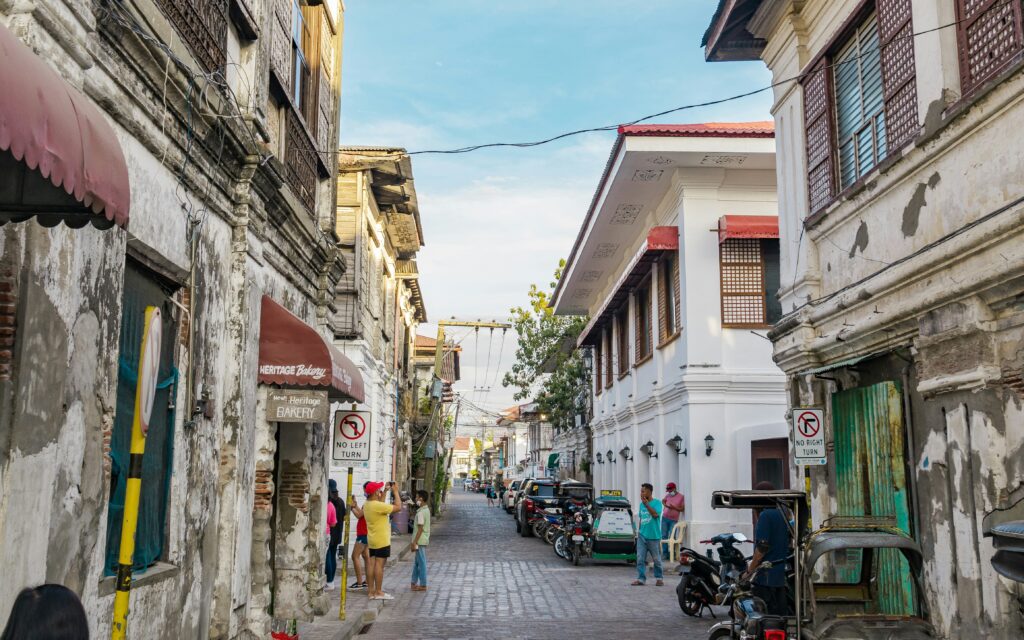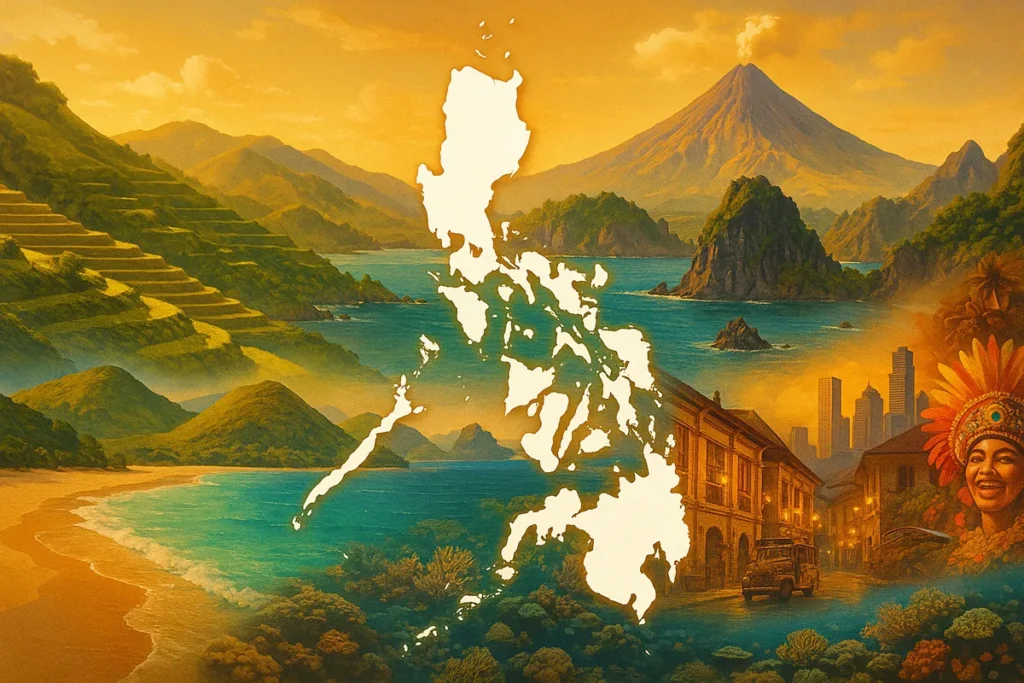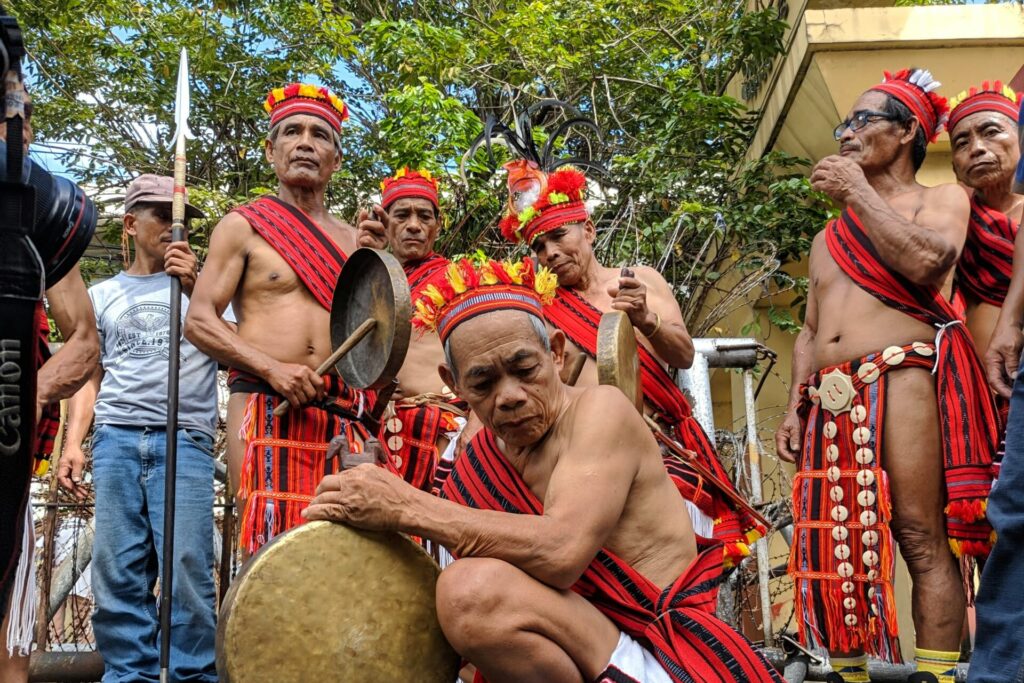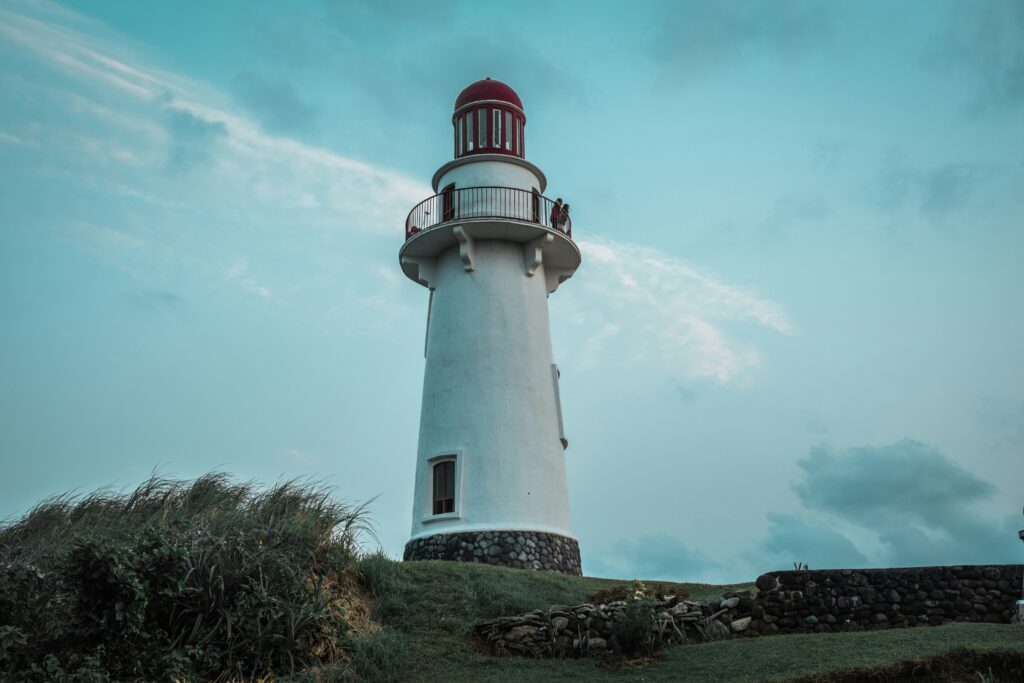The Ilocos Region, also known as Region I, sits on the northwestern coast of Luzon, where sunsets fall over the West Philippine Sea and centuries-old churches rise above quiet town plazas. It’s a land shaped by salt farms and windmills, by cobblestone streets in Vigan, by waves crashing along the surf towns of La Union, and by the iconic Hundred Islands of Pangasinan.
Ilocos is made up of 4 provinces: Ilocos Norte, Ilocos Sur, La Union, and Pangasinan.
Each province has something that draws travelers in. Ilocos Norte balances history and raw landscapes, Ilocos Sur keeps its colonial heart alive, La Union has become a hub for surfers and creative souls, and Pangasinan welcomes families and explorers with island-hopping and rich local food.
This Ilocos Region tourism guide brings it all together. You’ll find highlights of each province, food to try, cultural experiences worth joining, and travel tips to help you plan your journey.
Ilocos Region Tourism Guide | 4 Provinces & Best Highlights
📍 Location
Northwestern Luzon, facing the West Philippine Sea, bordered by Cagayan Valley and Cordillera to the east.
🌤️ Climate
Dry and sunny most of the year; hottest in March–May, cooler in December–February.
🗣️ Languages
Ilocano is widely spoken; Pangasinense is used in Pangasinan; Filipino and English are understood across the region.
🚗 Accessibility
6–8 hours by land from Manila; Laoag International Airport and San Fernando Airport connect flights domestically.
✨ Highlights
Vigan’s heritage city, La Union surf towns, Ilocos Norte’s windmills and beaches, Pangasinan’s Hundred Islands.
📅 Best Time to Visit
November to April for dry weather, ideal for heritage walks, surfing, and island-hopping.
Ilocos Region Tourism Guide: The 4 Provinces
Ilocos Region Tourism Guide: Province #1. Ilocos Norte
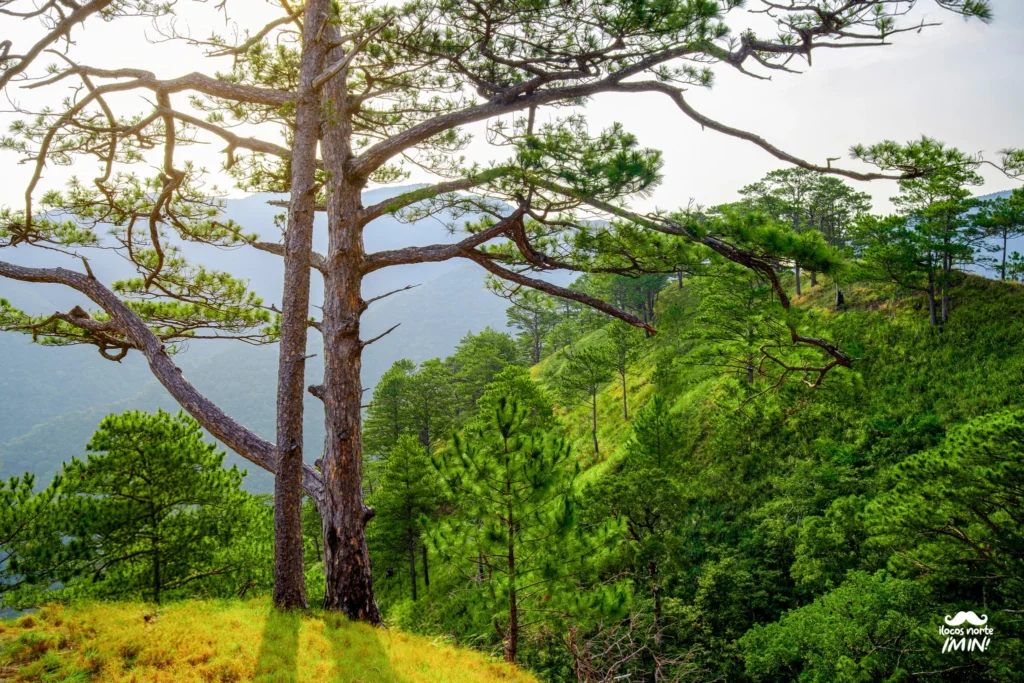
Ilocos Norte is where rugged landscapes meet cultural landmarks. Known for its windswept coastlines, it’s home to the famous Bangui Windmills, towering white turbines set against the South China Sea. Just nearby is Pagudpud, often dubbed the “Boracay of the North,” with Saud Beach and Blue Lagoon drawing in travelers for their powdery sand and clear waters.
Inland, history runs deep with sites like Paoay Church, a UNESCO World Heritage Site, and the Malacañang of the North, once the official residence of the Marcos family. Adventurers can explore Kapurpurawan Rock Formation, sandboard down the Paoay Sand Dunes, or drive up to Adams, a mountain town known for waterfalls and homestays. With Laoag City as its capital and Laoag International Airport as a gateway, Ilocos Norte is both accessible and diverse in attractions.
Ilocos Region Tourism Guide: Province #2. Ilocos Sur
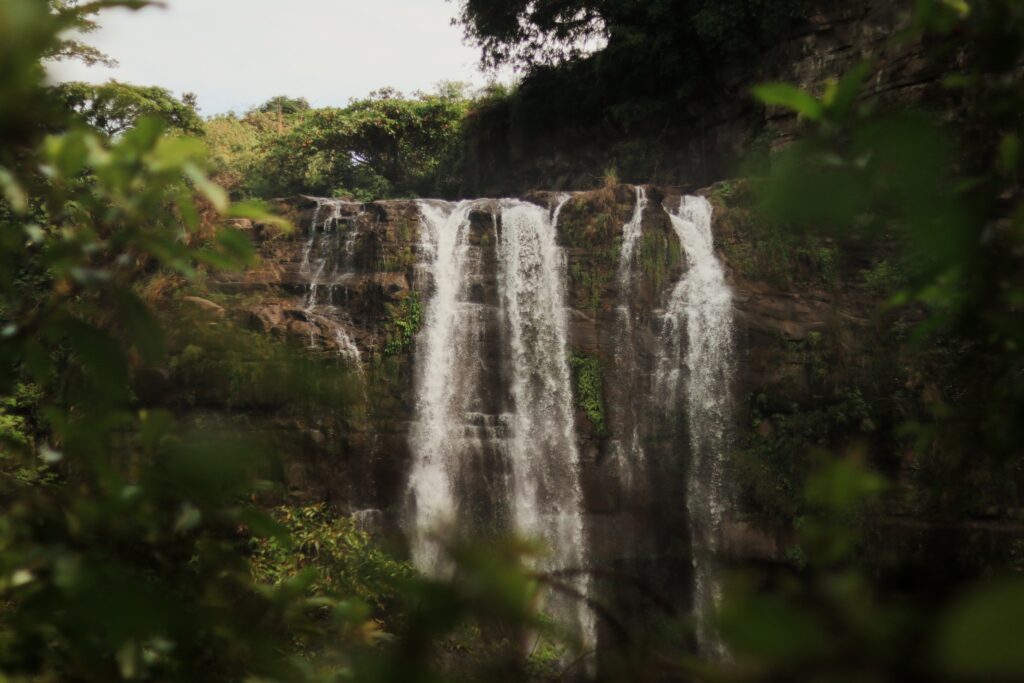
Ilocos Sur is best known for Vigan City, a UNESCO World Heritage Site and one of the New7Wonders Cities. Its cobblestone streets, ancestral houses, and horse-drawn kalesas create a living museum of Spanish colonial history. Beyond Vigan, Ilocos Sur has a coastline lined with beaches such as Mindoro Beach and Cabugao Bay, offering a more laid-back escape. Inland towns celebrate Ilocano traditions through weaving, pottery, and longganisa-making.
Historical landmarks include Bantay Church with its iconic bell tower, and the Crisologo Museum, which preserves stories of local politics and revolution. Festivals like Vigan’s Viva Vigan Binatbatan Festival of the Arts keep heritage alive with street dances and cultural performances. Whether strolling through Calle Crisologo at night or exploring hidden towns like Caoayan, Ilocos Sur offers travelers a rich combination of history, culture, and local life.
Ilocos Region Tourism Guide: Province #3. La Union
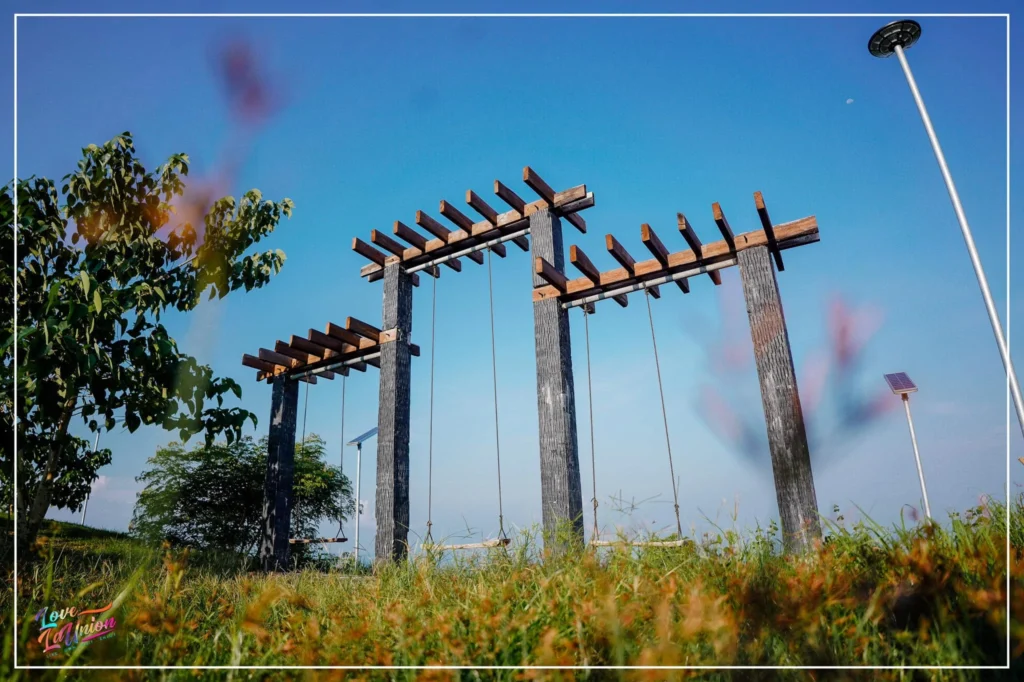
La Union, or “Elyu” as it’s affectionately called, has grown from a quiet coastal province into the country’s surfing capital. San Juan is the heart of the surf scene, where waves welcome both beginners and seasoned riders, and beachside cafés host travelers late into the night. But beyond surfing, La Union has layers worth exploring. Luna is known for its pebble beaches and the centuries-old Baluarte watchtower.
San Fernando, the capital, has markets where Ilocano delicacies and fresh seafood are best enjoyed. Inland, grape farms, waterfalls, and trekking trails offer alternatives for those seeking a slower pace. Over the past decade, La Union has also become a creative hub, with hostels, art spaces, and food spots shaping a youthful and welcoming culture. Just 5–6 hours from Manila, it’s one of the most accessible provinces in Northern Luzon for weekend getaways or longer stays.
Ilocos Region Tourism Guide: Province #4. Pangasinan
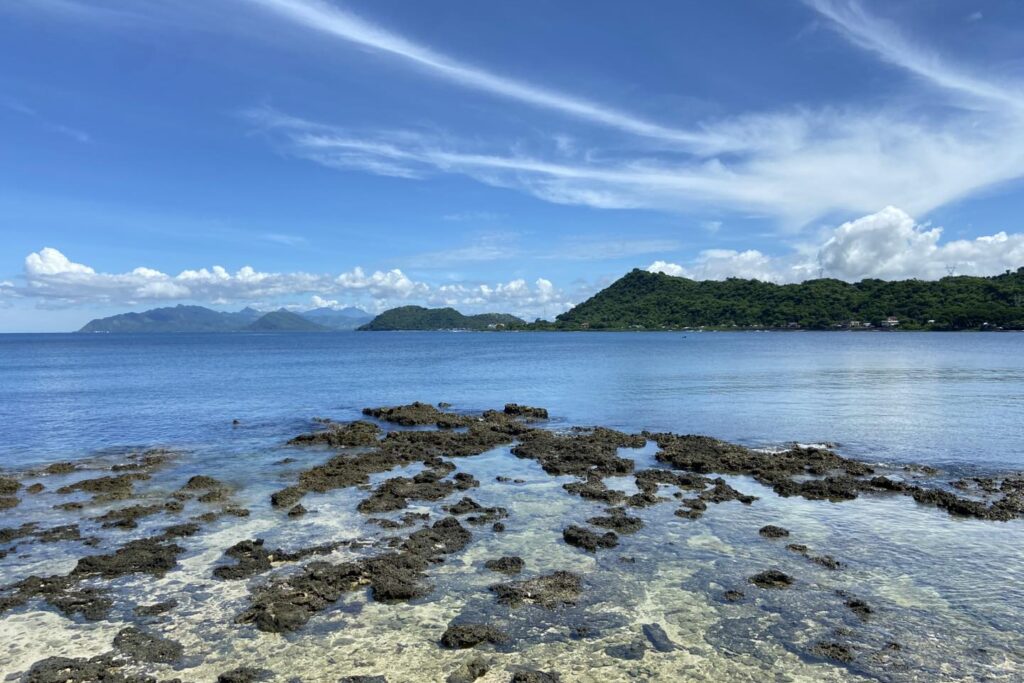
The largest of the four provinces, Pangasinan is most famous for Hundred Islands National Park in Alaminos, where over a hundred limestone islets rise from emerald waters. Island-hopping tours take travelers to Governor’s Island, Children’s Island, and Quezon Island, each with its own charm. But Pangasinan offers more than just its islands. Dagupan is the heart of bangus (milkfish) culture, celebrated with the annual Bangus Festival that features street parades, cook-offs, and cultural shows.
Lingayen, the provincial capital, played a role in World War II and today is a quiet coastal town with wide beaches. Pilgrims and history buffs alike are drawn to the Minor Basilica of Our Lady of Manaoag, one of the most visited churches in the Philippines. With long coastlines, food specialties, and cultural depth, Pangasinan blends natural beauty with Ilocano and Pangasinense traditions.
Ilocos Region Tourism Guide: Culture & People
The Ilocos Region is home to one of the most enduring cultural identities in the Philippines. Ilocanos are known for their resourcefulness, resilience, and thrift, traits shaped by a land where farming has long depended on hard work and careful use of resources. Life here moves with the seasons, from planting rice and tobacco in the fields to celebrating harvests with festivals that bring entire towns together. In Pangasinan, the Pangasinense people add another layer of heritage with their own language, cuisine, and coastal traditions. Together, these communities form a diverse yet interconnected culture.
Ilocano and Pangasinense Identity
The Ilocos Region is home to two strong cultural groups: the Ilocanos and the Pangasinenses. Ilocanos are often described as hardworking, thrifty, and resilient, shaped by a landscape where farming demands discipline. Pangasinenses, on the other hand, have a coastal culture tied to fishing and salt-making, with their own language and food traditions. Together, they form the cultural backbone of Region I, blending shared Catholic faith with unique local practices. This dual identity makes the region diverse yet united under the same Ilocano spirit of resourcefulness.
Festivals that Celebrate Heritage
Festivals in Ilocos reflect both faith and creativity. In Ilocos Sur, the Viva Vigan Binatbatan Festival keeps weaving traditions alive with street dances and parades. Laoag City in Ilocos Norte holds the Pamulinawen Festival, showcasing devotion through cultural shows and performances. La Union’s Sillag Festival of Lights celebrates the coastal way of life with lanterns and activities by the bay. Pangasinan’s Bangus Festival is a lively celebration of its most famous product, milkfish, with street dancing and cook-offs.
Daily Life and Values
Life in Ilocos is built on practicality and strong family ties. Most communities still depend on farming, fishing, or small-scale trade, though tourism and creative businesses are growing. Ilocanos are known for their frugality, often stretching resources and saving for the future. Meals reflect this lifestyle, focusing on vegetables, fish, and preserved dishes like bagoong. Whether in the countryside or in urban hubs like Vigan and San Fernando, the values of hard work and resourcefulness remain visible in daily life.
Spanish and Colonial Influences
Centuries of Spanish rule left deep marks on Ilocos culture. Vigan’s preserved ancestral houses and cobblestone streets are among the best examples of colonial architecture in Asia. Churches like Paoay and Santa Maria, both UNESCO sites, showcase baroque design adapted to earthquakes. Spanish influence also shaped Ilocano Catholic practices, blending with local customs during festivals and rituals. Yet, Ilocos was not only shaped by Spain — it also produced heroes like Diego and Gabriela Silang, who rose against colonial oppression.
Role in Philippine History
Ilocos played an important role in shaping Philippine history. The region produced leaders and revolutionaries, from Diego Silang to modern political figures. In Pangasinan, Lingayen Gulf was a major landing site during World War II, marking the return of Allied forces to the country. Historic towns and battlefields across the region carry reminders of its role in independence and wartime struggles. These stories highlight how Ilocanos and Pangasinenses have always been active participants in the nation’s history.
Indigenous Communities
Beyond the mainstream Ilocano and Pangasinense culture, indigenous groups still thrive in parts of the region. The Tingguians, for example, maintain their traditions of weaving, rituals, and communal living in upland towns. Their cultural practices connect the present to a pre-colonial past often overshadowed by Spanish heritage. These communities contribute to the region’s cultural richness, showing its diversity beyond the familiar. For travelers, learning about these groups offers a deeper appreciation of Ilocos as more than just heritage towns and beaches.
Ilocos Region Tourism Guide: Food & Cuisine
Ilocano food is as bold as the people who make it. It’s simple yet full of flavor, shaped by a culture of thrift and resourcefulness. From deep-fried pork belly that shatters with every bite to vegetable stews seasoned with fermented fish, Ilocos cuisine is unforgettable. Street food like empanada and hearty breakfasts of longganisa are part of daily life, while dishes like pinakbet show the region’s love for homegrown produce. Eating in Ilocos isn’t just about filling up — it’s about experiencing the flavors that define the region’s identity.
Bagnet: The Crispy Pride of Ilocos
Bagnet is perhaps the most iconic dish of Ilocano cuisine, a deep-fried pork belly that is crunchy on the outside yet tender inside. It’s similar to lechon kawali but cooked with extra care, often fried twice for maximum crispiness. In Ilocos Norte and Ilocos Sur, bagnet is not just a meal but a celebration dish often shared during fiestas. Locals pair it with bagoong isda (fermented fish sauce) or mix it into pinakbet, adding richness to vegetable stews. Visitors rarely leave Ilocos without having tried bagnet, and many even bring home slabs as pasalubong.
Ilocos Empanada: Street Food Staple
The Ilocos empanada is a bright orange, crispy turnover filled with longganisa, egg, and shredded green papaya. Cooked in rice flour dough and fried until crunchy, it’s a snack best eaten fresh with vinegar dipping sauce. Each province adds its own twist: Vigan empanadas are thinner and lighter, while Batac empanadas are larger with richer fillings. Street stalls across plazas, especially in Vigan and Laoag, serve empanadas day and night, making it an essential stop for travelers. This dish captures the Ilocano love for simple but flavorful food.
Vigan Longganisa: Garlicky Goodness
Unlike the sweeter longganisa found in other regions, the Vigan longganisa is garlicky, tangy, and slightly salty. Made with local vinegar and plenty of garlic, it delivers a bold flavor that pairs perfectly with rice, eggs, and tomatoes for a classic Ilocano breakfast. Many stalls in Vigan sell freshly made longganisa, often hung in strings at markets. It’s not just food but part of the city’s identity, celebrated during the annual Longganisa Festival. Visitors often take dozens home as souvenirs, making it one of the most recognizable products of the region.
Pinakbet and Vegetable Traditions
Ilocanos are known for their vegetable-based dishes, with pinakbet as the star. A mix of bitter melon, okra, eggplant, and beans cooked with bagoong, pinakbet reflects the region’s frugal yet flavorful cooking style. Vegetables are often grown locally, making meals both sustainable and seasonal. Dishes like dinengdeng, a lighter vegetable stew, also show the importance of greens in the Ilocano diet. These meals highlight how Ilocanos use humble ingredients to create healthy and memorable dishes.
Bagoong and Fermented Flavors
No Ilocano table is complete without bagoong, the fermented fish sauce that seasons almost everything. It’s sharp and salty, used in pinakbet, dipped with bagnet, or eaten with green mangoes. In Dagupan, Pangasinan, bagoong is central to both cuisine and economy, with entire communities producing it. The Ilocano fondness for preservation reflects a culture of making food last, whether through drying, fermenting, or salting. For outsiders, bagoong may be strong, but for locals, it’s the flavor of home.
Street Food and Local Treats
Beyond famous dishes, Ilocos has everyday snacks that locals cherish. Tupig, a rice cake wrapped in banana leaves and grilled, is a favorite pasalubong from Pangasinan. Miki, a noodle soup often served with thick broth and chicken bits, warms travelers in roadside eateries. Halo-halo in Ilocos has its own twist, often simpler than its Manila counterpart but just as refreshing. From the markets of Vigan to beach towns in La Union, food stalls offer these treats as part of daily life. For travelers, exploring these smaller bites often becomes just as memorable as tasting the region’s iconic dishes.
Ilocos Region Tourism Guide: Nature & Attractions
Pagudpud Beaches (Ilocos Norte)
Often called the “Boracay of the North,” Pagudpud’s coast offers two distinct moods. Saud Beach has a long stretch of fine white sand with calmer waters, ideal for families and sunset walks. Just a few kilometers away, Blue Lagoon attracts surfers and thrill-seekers, with its stronger waves and nearby zipline that sweeps across the bay. The famous Bangui Windmills are visible in the distance, making the shoreline even more iconic. Travelers who head this far north often say the long trip is worth it for the scenery alone.
View this post on Instagram
Bangui Windmills (Ilocos Norte)
Standing tall along a 9-kilometer stretch of shoreline, the Bangui Windmills are both a renewable energy project and a unique landmark. The towering white turbines create a surreal backdrop for photos, especially against the blue sea and sky. They symbolize how Ilocos Norte balances progress with natural beauty, as the wind farm supplies power to much of northern Luzon. Nearby stalls sell local snacks and crafts, making it a good stopover before exploring Pagudpud or Cape Bojeador. It’s one of the few places in Southeast Asia where travelers can walk right up to wind turbines on the beach.
View this post on Instagram
Paoay Church (Ilocos Norte)
A UNESCO World Heritage Site, Paoay Church is one of the best examples of Earthquake Baroque architecture in Asia. Built in the late 17th century, it has massive buttresses that give it both strength and beauty. Locals gather here for religious events, while visitors marvel at its weathered coral stone façade that has stood for centuries. Inside, the church feels humble compared to its striking exterior, but it remains a center of faith in the province. The surrounding plaza is often lively with food stalls and pasalubong shops, making it a stop that blends culture with community.
View this post on Instagram
Vigan City (Ilocos Sur)
A UNESCO World Heritage City, Vigan is famous for Calle Crisologo, where cobblestone streets and ancestral houses transport visitors to the Spanish era. Horse-drawn kalesas still ply the streets, and at night the lamps cast a golden glow that feels timeless. Beyond the main strip, weaving shops continue the tradition of abel Iloco fabric, while pottery makers shape burnay jars. The Bantay Bell Tower nearby offers panoramic views of the city. Vigan is a rare place where daily life and heritage preservation still live side by side.
View this post on Instagram
La Union Surfing (La Union)
Known as the surfing capital of Northern Luzon, San Juan, La Union has waves that attract both beginners and seasoned surfers. Surf schools line the beach, offering lessons and board rentals, while cafés and hostels create a laid-back community vibe. Beyond the surf, nearby Tangadan Falls in San Gabriel provides a refreshing day trip with its cool waters and scenic cascades. Luna, another town, is home to the Pebble Beach and a centuries-old Spanish watchtower. La Union has grown into more than just a surf town — it’s now a hub for artists, foodies, and young travelers.
View this post on Instagram
Hundred Islands National Park (Pangasinan)
With 124 islands scattered across Lingayen Gulf, Hundred Islands National Park is one of the Philippines’ earliest protected natural areas. Island-hopping tours bring travelers to developed spots like Governor’s Island, with its view deck, and Quezon Island, with picnic huts and snorkeling spots. Children’s Island has shallow waters perfect for families, while undeveloped islets offer quiet escapes. The park is also a favorite venue for camping, kayaking, and zipline adventures. For Pangasinenses, the islands are not just tourist spots but part of community celebrations and family outings.
View this post on Instagram
Bolinao and Anda (Pangasinan)
On the western tip of Pangasinan, Bolinao and Anda boast some of the most underrated beaches in Luzon. Patar Beach offers golden sand and clear waters, while nearby Bolinao Falls provides freshwater swimming surrounded by greenery. The Cape Bolinao Lighthouse, built in 1903, stands on a hill overlooking the West Philippine Sea. Anda’s Tondol Beach is known for its long, shallow sandbars that appear during low tide, creating a natural playground. These towns remain quieter than Hundred Islands but reward those who travel farther off the usual route.
View this post on Instagram
Ilocos Region Tourism Guide: Getting Around
Travel Routes
🚗 Manila to Pangasinan
5–6 hours via NLEX–SCTEX–TPLEX. Alaminos (Hundred Islands) and Dagupan (Bangus Festival capital) are top stops along this route.
🚐 Manila to La Union
6–7 hours by bus (Partas, Viron, Dominion). San Juan is the main hub for surfing, while nearby Tangadan Falls is a favorite side trip.
🚌 Manila to Ilocos Sur
7–8 hours by bus to Vigan City. From here, jeepneys and tricycles connect to Bantay, Caoayan, and nearby heritage towns.
✈️ Laoag International Airport
A 1-hour flight from Manila brings you straight to Laoag. From here, Pagudpud, Paoay, and the Bangui Windmills are just a drive away.
Public Transport: Buses like Partas, Viron, and Dominion Transit are the main lifeline, with trips leaving Cubao, Pasay, and Manila almost every hour. Jeepneys and tricycles cover short routes within towns, while vans connect smaller municipalities. Vigan, Laoag, Dagupan, and San Fernando serve as central transport hubs.
Private Cars and Road Trips: Driving through Ilocos offers flexibility and the chance to enjoy scenic coastal views. The TPLEX has cut travel times dramatically, making Pangasinan accessible for weekend trips. Road trips allow stopovers in La Union surf towns, Vigan’s heritage streets, or Laoag’s food markets before continuing to Pagudpud. Gas stations and rest stops are frequent along the highway, but remote areas may still have limited facilities.
💡 Pro Tip: Plan long drives to start early in the morning. Coastal highways are scenic but can get congested, while nighttime travel may mean fewer buses or vans in operation.
Travel Tips
💰 Budget
Expect to spend ₱1,500–₱3,000 daily for mid-range travel, covering meals, lodging, and transport. Backpackers can spend less, while private tours cost more.
🛡️ Safety
Highways are generally safe, but coastal roads can get crowded. Stick to well-lit areas at night, secure belongings, and ask locals before exploring remote areas.
🎒 Packing
Bring light, breathable clothes for hot days, plus a light jacket for cooler nights in Ilocos Norte. Don’t forget sunscreen, a hat, and comfortable walking shoes.
🚍 Transportation
Buses and jeepneys are reliable but may run on flexible schedules. For faster travel, hire vans or rent a car to explore multiple provinces at your own pace.
🍲 Food & Water
Don’t miss bagnet, empanada, and Vigan longganisa. Stick to bottled or purified water, especially in smaller towns, and pace yourself with bagoong if it’s your first time.
🌿 Etiquette
Respect locals by greeting politely in Ilocano (“Naimbag nga aldaw”). Be mindful in churches and heritage areas, and support small vendors by buying local goods.
Week-Long Itinerary Overview
✨ Want a Custom Ilocos Region Itinerary?
We can help you design a personalized trip across the Ilocos provinces.
Whether you’re after adventure, culture, or food, we’ll craft the perfect route for you.
Conclusion
The Ilocos Region is a place where history, food, and landscapes come together in ways that leave lasting impressions. From the cobbled streets of Vigan to the golden sands of Pagudpud, every stop tells a story that blends past and present. Traveling here feels like flipping through a book with chapters that shift between Spanish colonial towns, vibrant festivals, and rugged coastlines kissed by the sun.
But what makes Ilocos truly unforgettable is the way it connects people. Sharing a plate of bagnet in a roadside eatery, watching fishermen haul their nets at dawn, or hearing Ilocano greetings in small towns gives each trip its heart. It is not just about the sights, but about the everyday moments that anchor you to the place.
Whether you plan a weekend escape or a weeklong journey, Ilocos rewards both quick visits and slow exploration. Take the time to wander heritage streets, try local flavors, and let the coastal drives surprise you with views that never seem to end. And when you’re ready to dive deeper, check out our province guides to help you uncover even more of what makes Region I such a rich part of the Philippines.
Disclaimer: Some media content featured on this page has been embedded directly from third-party platforms such as Facebook, Instagram, or YouTube using their official embed codes. We do not claim ownership of this content. All rights remain with the original creators. If you are the owner of any embedded material and wish to request its removal, please contact us and we will address it promptly.

